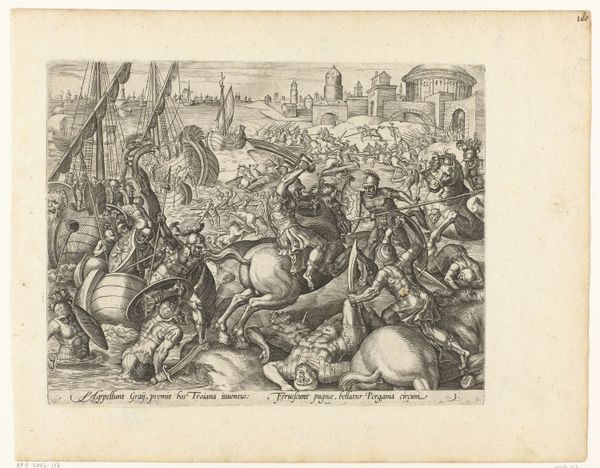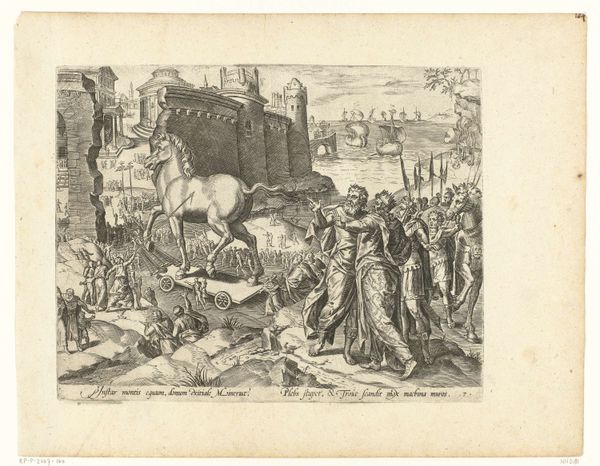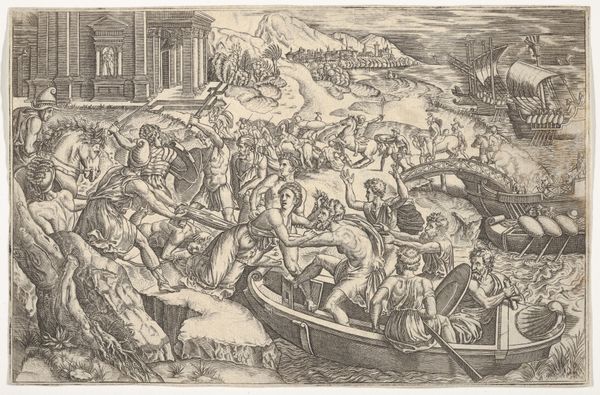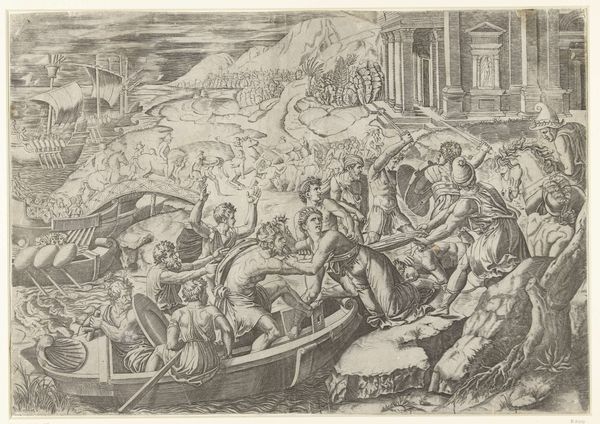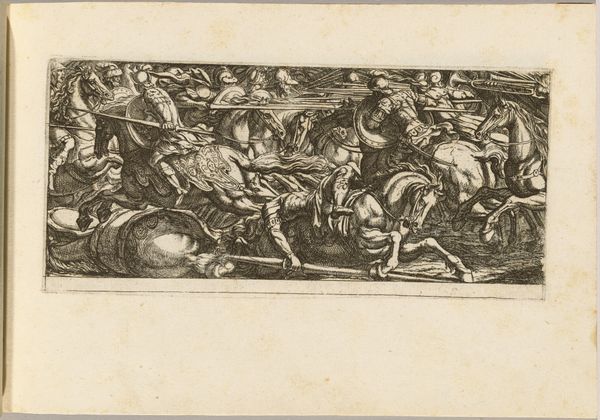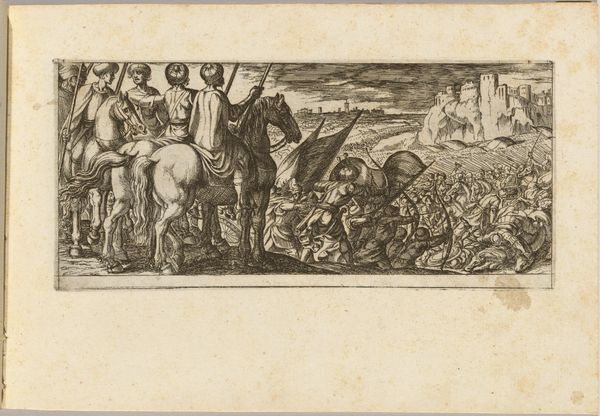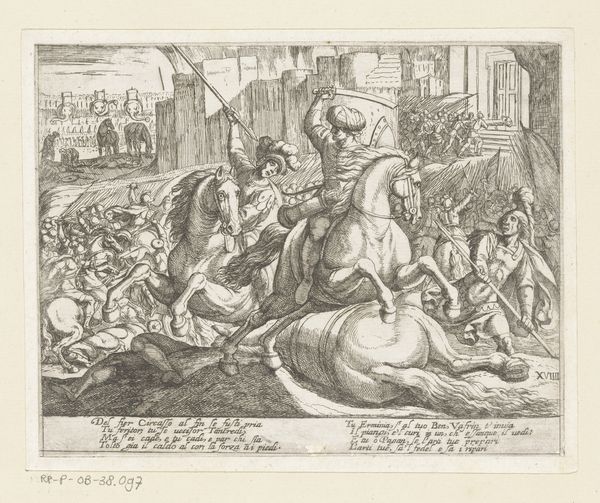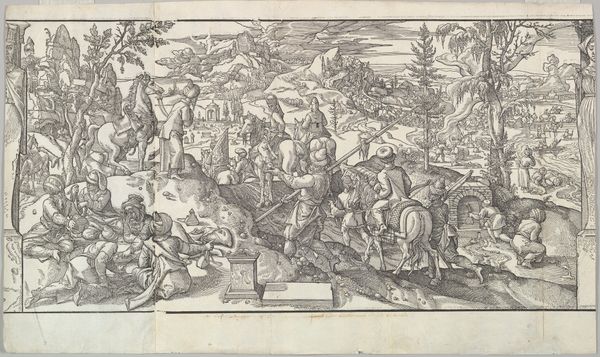
print, engraving
#
pen drawing
# print
#
figuration
#
11_renaissance
#
history-painting
#
engraving
Dimensions: height 200 mm, width 255 mm
Copyright: Rijks Museum: Open Domain
Curator: The overall impression this work evokes is chaos, a flurry of sharp lines that makes the abduction itself almost secondary to the turmoil. Editor: Indeed. The Rijksmuseum houses this print entitled "Ontvoering van Helena," or "Abduction of Helen," created before 1571 by Pieter Jalhea Furnius. It’s an engraving, relying on the stark contrast of black lines on a white field to depict a dramatic scene. Furnius presents a complex, densely populated scene of figures fighting and fleeing. What draws your attention most in terms of the socio-historical narrative here? Curator: For me, it’s the active role of Helen herself, pushed along rather than passively carried. It hints at the political maneuverings that sparked the Trojan War rather than portraying her solely as a helpless object. She becomes a symbol for conquest rather than only an unwilling participant. Editor: That's a compelling read. I'm interested in the technique here. Furnius creates depth through incredibly fine, cross-hatched lines, massing the darkest areas around the points of conflict to visually intensify the scene. The composition uses overlapping figures and architectural elements, drawing the eye across the narrative, left to right. The inclusion of that imposing ship on the left suggests the scale of the abduction. Curator: Precisely, the setting of the work speaks volumes; placing the event against the backdrop of Troy, with its emerging architecture amidst the warfare, transforms the personal drama into a clash of civilizations. Consider the symbolic power Helen held, the diplomatic tension, the way her capture could ignite nations. Editor: And what do you make of her abduction, and how the act itself reflects upon this time and what that might signal about gender and conflict? Curator: Gender in conflict is made apparent by Furnius when Helen is positioned merely as a pawn caught between battling powers. A commentary perhaps on the roles ascribed to women in times of war? What of the ship design? Does that seem relevant to you? Editor: Well, to me, it stands out both due to its impressive scale as well as due to the almost bizarre ornamentation around the ship's bow - the ornate detailing adds to the image's feeling of over-wrought frenzy. This detail makes this print more than a historical record—it’s a designed artifact intended to provoke a certain emotional response, wouldn't you agree?
Comments
No comments
Be the first to comment and join the conversation on the ultimate creative platform.
